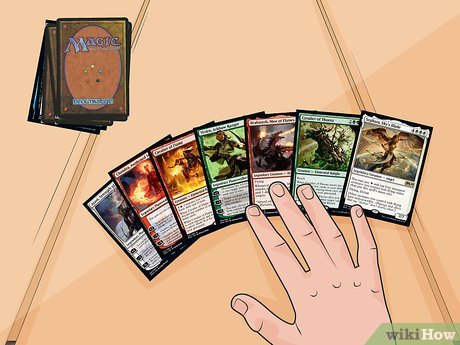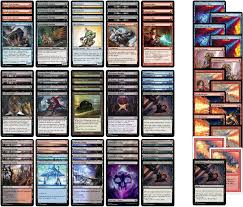How to Build a Competitive MTG Standard Deck – A Beginner-Friendly Approach

Starting out in Standard Magic: The Gathering can feel like a steep climb. With so many cards, sets, and strategies, knowing where to begin isn’t always obvious. Whether you’re eyeing your first Friday Night Magic or just want to win more often on Arena, this guide lays out the basics of building a deck that can hold its own.
Know What You’re Getting Into: What Standard Means
Standard rotates. What does that mean? It means only the latest sets are allowed—typically the past year or two of releases. It keeps things fresh (and your old cards benched). You’ll want to double-check what’s legal by heading to Wizards’ site before you build.Your main deck must have 60 cards minimum, no upper limit—but don’t go over unless there’s a real reason. Also, you’re allowed up to 15 cards in your sideboard if you’re playing best-of-three. And unless it’s a basic land, no more than four copies of a single card in your main and side combined.
Pick a Game Plan: The Archetype
Let’s keep this simple: every solid deck fits a general style of play. Here are the big ones:
Aggro: Low-cost creatures, fast wins. Think Mono-Red that tries to finish the game by turn four.
Midrange: Balanced threats and answers. Often two-color decks with good removal and resilient threats.
Color Identity: Don’t Get Too Fancy
Control: Slower, reactive. Lots of counterspells, sweepers, and late-game closers.Combo: Rare in Standard, but some decks win off a specific interaction. Not beginner-friendly.New player tip: Aggro and Midrange are easier to pilot and tweak.
Color Identity: Don’t Get Too Fancy
Most competitive lists stick to one or two colors. Stretching into a third can work if the mana supports it, but it’s easier to stay tight.Some combos naturally go together—Red and Green for beefy creatures, White and Blue for defense and tricks. Look for mana fixers like Restless Ridgeland or Cavern of Souls to help with multi-color decks, but make sure your mana base doesn’t betray you.
Your Land Game Needs to Be Tight
No matter how good your spells are, if you’re stuck on two lands or flooded at five, you’re going to lose.Most decks use between 22 to 26 lands depending on speed:Aggro: 20–22 landsMidrange: 23–25 landsControl: Up to 27, especially if your spells are expensiveGood land picks:Basics (Plains, Island, etc.)Duals (Battlefield Forge, Restless Fortress)Tech lands (Mishra’s Foundry does work in some aggro builds)
Figure Out Your Core Cards
A deck is more than just good stuff. You need synergy and a clear route to victory.
1. Win conditions – Threats your opponent has to answer, like Sheoldred, the Apocalypse.
2. Removal or disruption – Spells like Go for the Throat, Cut Down, or Make Disappear help clear the way.
3. Draw / Advantage – Cards like Memory Deluge keep you from running out of gas.
4. Synergistic cards – Stuff that works better in context, e.g., Raffine, Scheming Seer alongside cheap creatures.
Example Mono-Red Shell:
4 Play with Fire
4 Kumano Faces Kakkazan
4 Monastery Swiftspear
4 Charming Scoundrel
Curve Matters—A Lot
Having the right mix of mana costs can make or break a deck.Aggro wants to stick to low drops—turns 1–3 should be busy.
Midrange mixes early plays with solid 4–5 mana threats.Control runs lean early and builds to high-impact cards later.Don’t fill your hand with six-drops and wonder why you died on turn five.
Testing Isn’t Optional

Your first draft probably isn’t perfect. That’s okay. Playtest it—on Arena, at your LGS, with friends.Pay attention to what keeps going wrong:If fast decks run you over, slot in more early removal or lifegain.If you’re empty-handed too often, increase your draw or recursion.If you lose to specific cards, consider targeted answers in the main or sideboard.
Sideboard Like You Mean It (Best-of-Three Games Only)
Don’t ignore this part. Your 15-card sideboard is your toolbox for dealing with matchups your main deck struggles with.Facing a lot of Control? Duress, Negate, or threats they can’t counter easily help.Against Aggro? Board wipes (Sunfall, Temporary Lockdown) and lifegain are key.Hate graveyard decks? Cards like Unlicensed Hearse or Soul-Guide Lantern shine here.Sideboarding wins games you’d otherwise lose.
General Advice for New Deckbuilders
Copy first, learn later: Grab a top-tier list from MTGGoldfish or Untapped.gg. You’ll learn what works and why.
Don’t go over 60 cards:
Adding “just one more” is rarely correct.
Mulligan smart: Keep hands that do something by turn 2 or 3.Know the meta: Stay updated. New sets and bans can flip the format on its head.
Cheap Deck to Start With: Mono-Blue Tempo
If you’re short on wildcards or dollars, this one punches above its cost.
Creatures (16):
4 Haughty Djinn
4 Tolarian Terror
4 Tolarian Geyser
4 Veldt Scavenger
Spells (20):
4 Consider
4 Fading Hope
4 Spell Pierce4 Impulse
4 Slip Out the Back
Lands (24):
20 Island
4 Restless Anchorage
Simple to pilot, tricky to master, and capable of stealing games from much pricier builds.
No matter your budget or experience level, building a Standard deck that competes and fits your playstyle is within reach. The key is understanding your plan, sticking to the fundamentals, and always learning. Good luck—and don’t forget to shuffle well.
If you’re looking for a place to get started with deck ideas, testing tools, or high-quality proxies, check out https://mtgetsy.com/.


